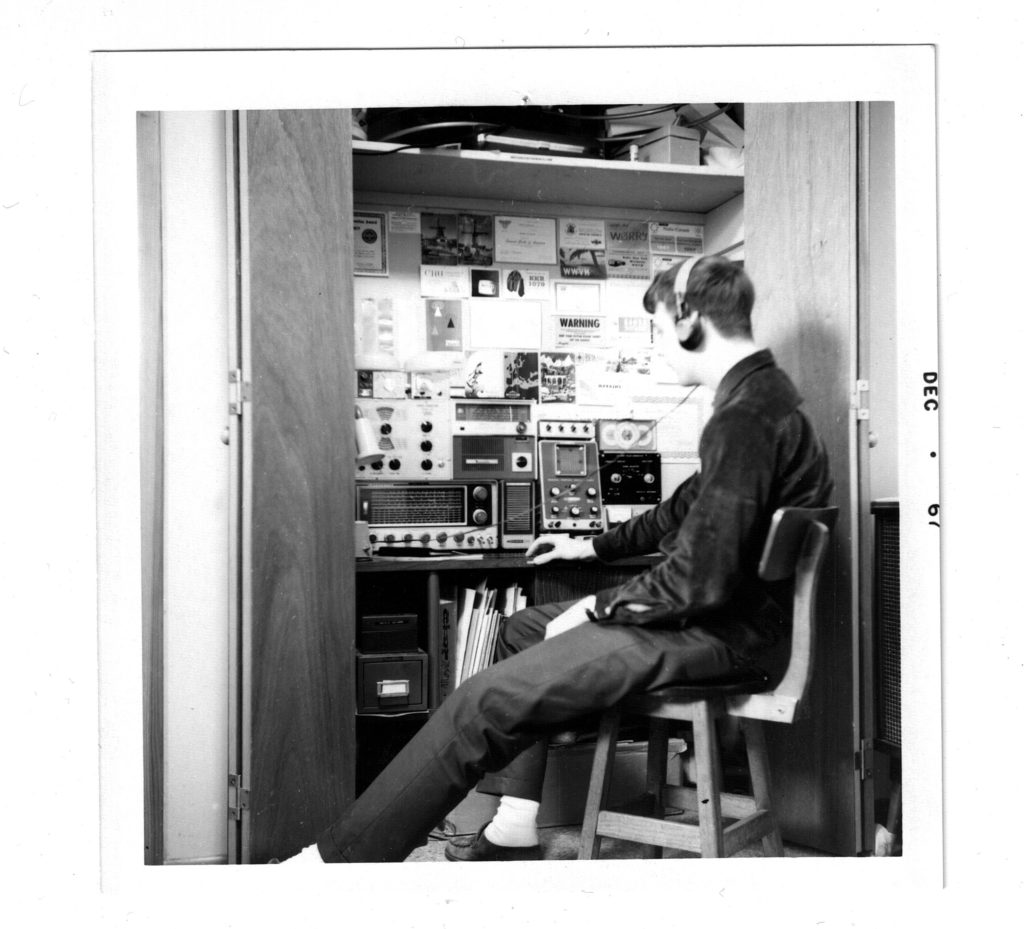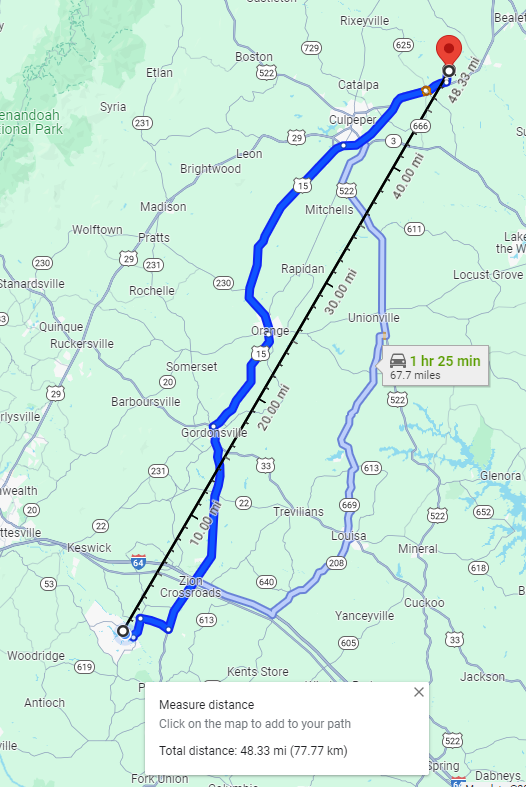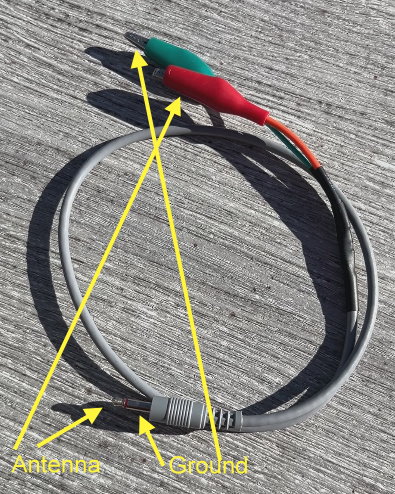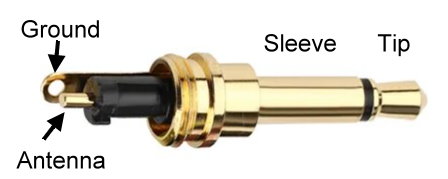When I was a young shortwave listener 56 years ago, I had a Lafayette KT-340 desktop radio with connectors on the back for an antenna and a ground. I always hooked up my 75-foot long wire to the ANT post and connected the GND post to a water pipe or something. Life was good.

Nowadays, I have many portable radios and, with the exception of my vintage Panasonic RF-085, there aren’t any explicit ground connections. Still, several of my portables have an external antenna jack that take a phone plug with a sleeve and a tip connection (the tip to the antenna and the sleeve theoretically to the ground). One reads online not to bother with a ground on these radios, but I’ve had a different experience sometimes, and in this blog article, I want to describe one of them.
I’ve often said that I don’t get longwave where I live — there is just nothing on. Today, I was trying to receive an experimental broadcast on LW; I took my Tecsun PL-990 radio outdoors to my 20-foot wire up a tree (WUT) antenna where there is also a copper ground rod to see if I could catch the station. No luck, but as I was scanning LW just for grins, I came across a very strong AM Morse signal repeating “MSQ” on 351 kHz. It’s the Culpeper Virginia Regional Airport broadcasting with a reported power of 25W (elsewhere I’ve seen 10W). This is no once in a lifetime DX reception, as that airport is only 48 miles from me.
Now here’s where it gets interesting. As I said, the station was quite strong on my PL-990 with the WUT antenna connected to the external antenna tip and the ground rod to the sleeve (and the radio switched to use the external antenna). When I attempted to receive the station on the internal ferrite antenna, there was nothing whatever, zilch, nada. I went back to the external antenna but disconnected the ground. The station was barely audible. Signal strength with the ground was 19-20 dBμ, and without 4-6.
Put simply, that ground connection made a world of difference; here is the video. The red wire goes to the tip and the black wire to the ground from the radio. The antenna has the black clip and the ground is silver.
I repeated the experiment with my PL-330 radio that has a hidden feature to use an external antenna on MW and LW. The results were the same except that the reception was not as strong as it was on the PL-990.
Mediumwave and Shortwave
Antenna + ground make a huge improvement on mediumwave, noting that few of my radios actually allow an external antenna on MW (PL-330, PL-990 and Panasonic RF-085). I did a video some time ago with the RF-085 demonstrating this.
Popular wisdom says that ground is less important on shortwave, but even if the effects decrease, there is still an effect. I tested on the Tecsun PL-330 on 6070 kHz (CFRX, Toronto, 400 miles away) and got a much clearer signal when adding the ground.
Construction
Several commenters you the YouTube video of the test wished that I had talked more about the connection of the ground. Here’s more on that topic.
I used a commercial ground rod, such as electricians use for grounding an electrical installation. They are readily available at home improvement stores like Lowes or Home Depot. They can also be found online.

They come in different lengths with 8 feet being the standard for home electrical systems. I used an 8-foot rod because it was easy to find, but I only drove it 2 1/2 feet in the ground. Amazon sells a 4-foot rod that I would probably get if I were doing another radio project.
Connecting the ground rod to the ground wire is pretty simple. I used lamp cord for my wire. I tinned the end with solder and burnished the rod to make sure there was no corrosion.

Make sure that there is a firm connection.

I terminated my ground wire with alligator clip to make it easy to connect to most anything.
Then I used a bit of old audio cable with a 1/8″ (or 3.5mm) mono phone plug, connecting the ground alligator clip to the sleeve of the plug and the antenna clip to the center tip. I finished it off with shrink wrap tubing to keep everything sturdy.
My vintage Panasonic RF-085 has an explicit ground connection.
Updates
Since the original post, I have also picked up another 25W beacon on 375 kHz from the Shenandoah Regional Airport near Staunton, Virginia, identification code “SH.”
It gets even better. I tried setting the radio for SSB detection. That was another big boost in performance, making a barely audible signal with antenna + ground into a clear signal so that I could copy the Morse Code ident. This one was from Fredericksburg, Virginia.
I went out around midnight and I faintly heard programming (!) on 153 kHz that might be Chaine 1, Algeria. Gotta follow up on that.
I have a Qodosen SR-286 receiver on order that also allows an external antenna on LW/MW. It’s supposed to be very sensitive on LW/MW. I’ll be testing when it comes in mid-February. [Update: It’s fantastic with the antenna + ground.]





 [robot emoji] symbol. Content comes most often from Microsoft Copilot, but may also come from Perplexity, ChatGPT, Duck.ai or Deep Seek.
[robot emoji] symbol. Content comes most often from Microsoft Copilot, but may also come from Perplexity, ChatGPT, Duck.ai or Deep Seek.
Thanks Kevin. Does the Earth go on the sleeve of the jack and is that the flat flap out the back of your picture of the jack?
Regards JG
Yes.
I repeated the experiment on MW and got similar improvements with the WUT antenna and a ground. With the internal ferrite antenna I got 16 audible MW stations at midday. With the WUT and ground, it was 70.